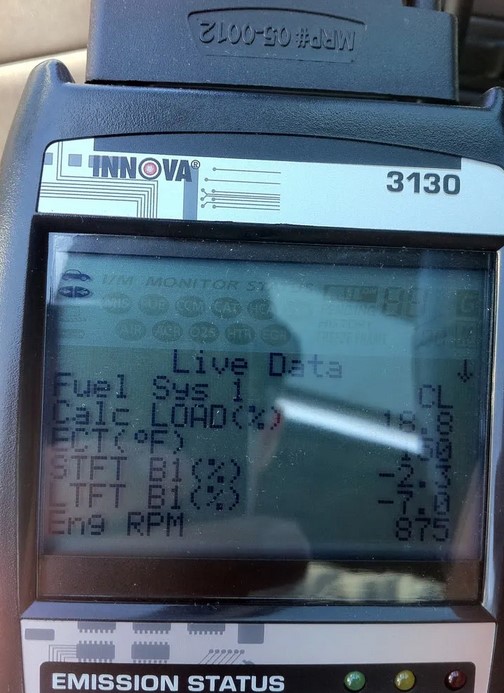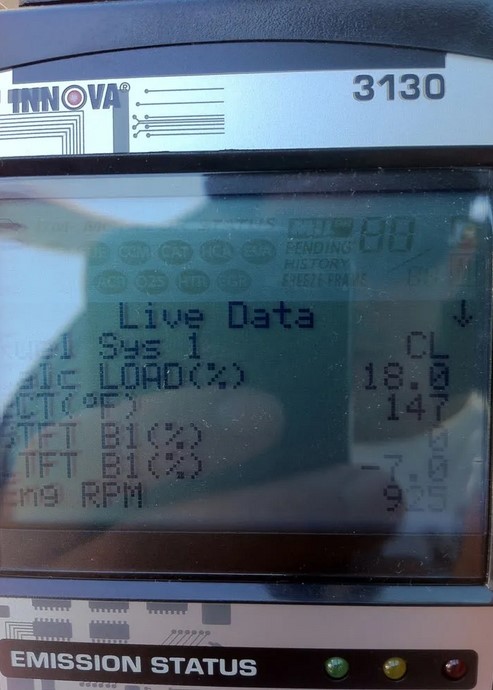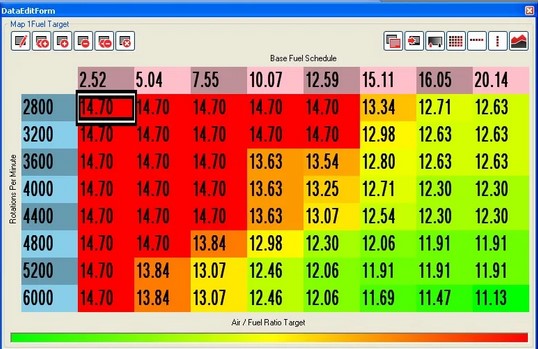If you have an ok grasp on how modern fuel injection theory, this'll make sense.
Most people will agree a piggyback will do nothing as far as tuning in closed loop....... well as far as AFR is concerned, no, but it will "tune" other areas of the ECU if you look past the AFR guage.
In closed loop the ECU references sensor data aganist the O2 sensor data to maintain a 14.7 AFR in closed loop. As it sees variations from the factory programed maps the ECU will make a note on a short term fuel trim map, once it sees the variation for enough cycles, it enters that short term note into long term fuel trims. Fuel trims are a % correction above or below the factory map value the car needs to maintain a 14.7:1 AFR in closed loop. If you've dropped in bigger injectors, the ECU is going to learn that it needs to subtract fuel at every point on the fueling maps. So if you tune the car in open loop before the fuel trims are set, once the ECu modifies the trim tables, the tune doesn't work anymore.
I used to have 2 maps tuned on my SAFC, one for the first 100-200 miles after the ECU was reset, and a second map to switch to after the fuel trims had settled back down. This works well, but only if you do your own tuning and know your car and how the ECU works. If you take your car to the tuner, open your wallet, and then drive away, best of luck.
If you have access to OBD diagnostic equipment you can usually access fuel trim values. If you can see these values you'll soon realize you can "tune" with a piggyback in closed loop. The tuning won;t have any affect on the AFR in closed loop, none, nada, zip. What it will have a direct effect on is the fuel trim values in closed loop. This is how it is on my MAF sensor car anyway. If you play with MAF sensor data in closed loop while watching the trim values, you can get them pretty close to zero....... in the long run this means the ECU won't see any need to make corrections to trim maps, which means your tune isn't going to drift (as much) once the ECU runs in closed loop for a while.
You're going to have to make sure the device is set to a throttle % and RPM setting that overlaps with idle and part throttle cruise, otherwise you're wasting your time.
Piggyback tip #2
The uncorrected fuel curve on a car is going to have high points and low points. Your tuning device will probably let you set a tuning point every xxx RPMs. Don't be tempted to set these points as close as possible thinking it = more accurate tuning, it's a waste of time and over complicates tuning.
If you can graph AFR vs RPM, you can see where there are peaks and a low spots on the uncorrected fuel curve, this curve is going to maintain the same general shape. If you put correection points only at these low and high points you can do way more with a lot less. If you have a peak between two low points, you can bring down the peak, or bring the low points up to flatten the fuel curve. I have 4 correction points in open the open loop range of my piggy back, adjusting 1 point is going to do way more, and be way quicker than adjusting a correction point every 400 or so RPMs, which is how I used to have it set up. I actually have more correction points in the low RPM closed loop section of my tuning maps than I do in open loop.
As mentioned above, you will need an OBDII diagnostic tool that will display fuel trims. As you can see below, short term and long term fuels trims are pulling fuel, most likely due to the 440cc injectors the car has.

By subtracting fuel under the the low throttle map, you can get short term trims down to 0% (or close to). Ideally, you would have previously reset the ecu to clear fuel trims so that LTFT reads 0% as well (I did not, hence the -7% value seen below). You need to do this from idle rpm's to at least 3000 rpm's or more (whenever the car is closed loop).

Here is a diagram Justin sent me which shows when the car is in closed loop. Unfortunately, I don't really know how base fuel schedule relates to load, but it gives you a general idea.
